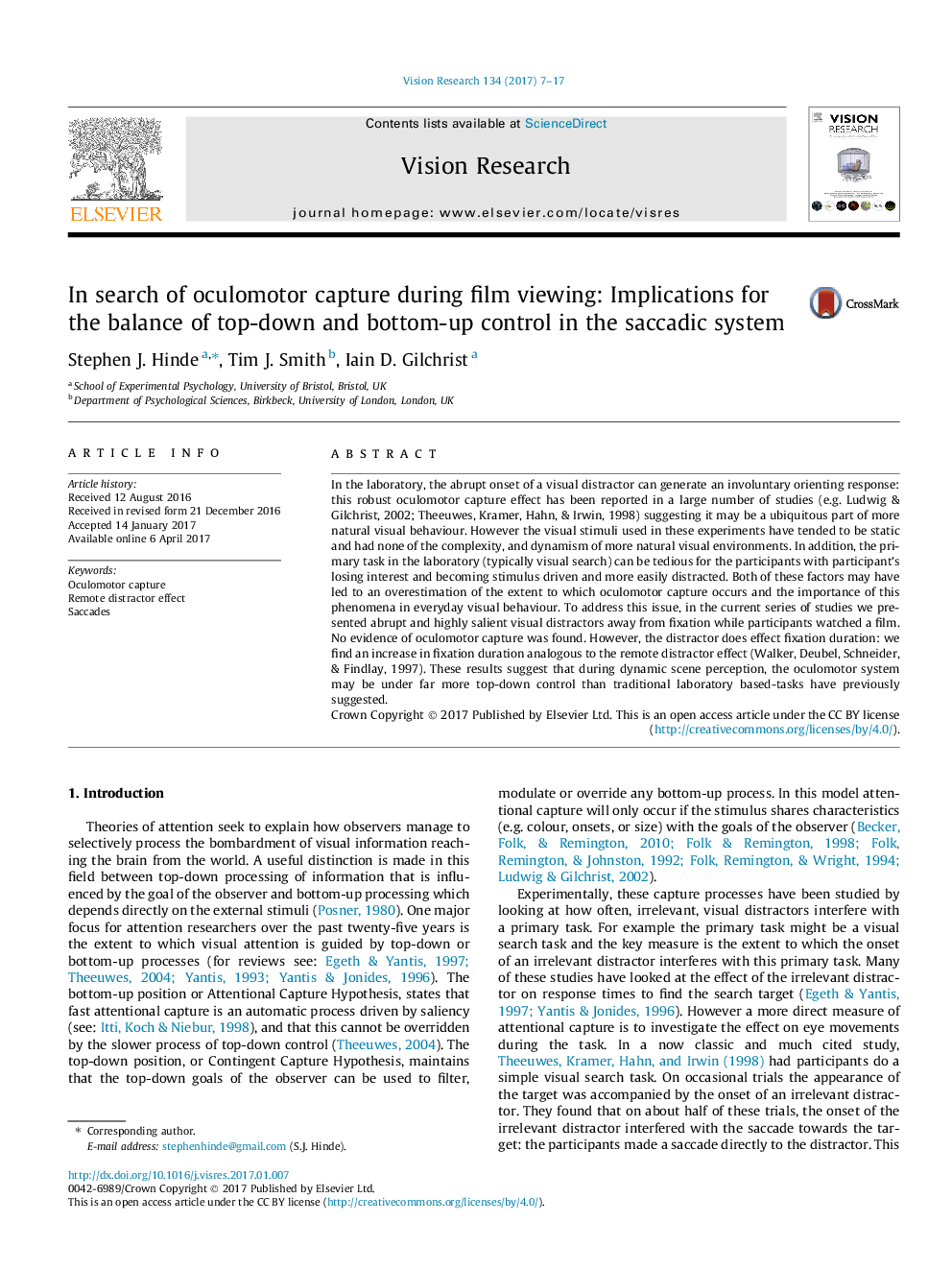| Article ID | Journal | Published Year | Pages | File Type |
|---|---|---|---|---|
| 5705876 | Vision Research | 2017 | 11 Pages |
Abstract
In the laboratory, the abrupt onset of a visual distractor can generate an involuntary orienting response: this robust oculomotor capture effect has been reported in a large number of studies (e.g. Ludwig & Gilchrist, 2002; Theeuwes, Kramer, Hahn, & Irwin, 1998) suggesting it may be a ubiquitous part of more natural visual behaviour. However the visual stimuli used in these experiments have tended to be static and had none of the complexity, and dynamism of more natural visual environments. In addition, the primary task in the laboratory (typically visual search) can be tedious for the participants with participant's losing interest and becoming stimulus driven and more easily distracted. Both of these factors may have led to an overestimation of the extent to which oculomotor capture occurs and the importance of this phenomena in everyday visual behaviour. To address this issue, in the current series of studies we presented abrupt and highly salient visual distractors away from fixation while participants watched a film. No evidence of oculomotor capture was found. However, the distractor does effect fixation duration: we find an increase in fixation duration analogous to the remote distractor effect (Walker, Deubel, Schneider, & Findlay, 1997). These results suggest that during dynamic scene perception, the oculomotor system may be under far more top-down control than traditional laboratory based-tasks have previously suggested.
Keywords
Related Topics
Life Sciences
Neuroscience
Sensory Systems
Authors
Stephen J. Hinde, Tim J. Smith, Iain D. Gilchrist,
